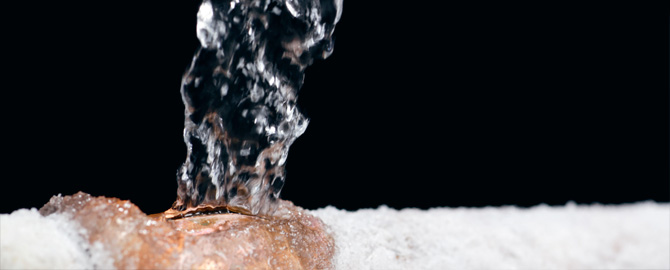Life in Toronto has its benefits and disadvantages. We have milder winters than most of Canada. “Toronto the Good” has little in the way of crime, and our economy is one of the best in the country. A downside to living here, however – apart from the bedbug infestation – is the old homes and infrastructure that often cause headaches for residents and the City alike. Plumbing problems, in particular, are commonplace and are almost as much of an issue as the bedbugs. Here are the top 5 issues homeowners in the GTA typically have to deal with.
Blocked Toilets
This is the City’s single most common plumbing problem. Toronto’s focus on installing low-flush toilets came at a price. Sure, it’s great for the environmentally-conscious homeowner to know he isn’t using unnecessary water, but when the City introduced a now-defunct rebate for these toilets, the number of blockages suddenly shot up. Why? Because not everyone remembers to wipe twice/flush once, that’s why. And the end result is a blockage that no amount of flushing will dispel – even though you end up using far more water than the old toilet did.
Clogged Drains
The Megacity’s aging infrastructure, some of it built in the early 20th century and “patched” over the years, simply can’t handle the load nowadays:
- Drainage systems in some of the older suburban areas aren’t equipped to deal with stormwater runoff from 300 homes, in an area that had 30 homes when the drains were installed.
- The plumbing problem is made worse by runoff that comes with leaves and other debris from the eavestroughs and downspouts, in quantities that rapidly cause blockages and flooding.
In addition, many drainage systems are compromised by the encroaching roots of trees as they reach maturity and spread through the neighborhood.
Dripping Faucets
Ok, this one isn’t specific to the GTA in any way, but it remains one of the single most common plumbing problems homeowners deal with regularly. It wastes water, causes an increase in your bill, erodes fittings such as baths and basins, and builds up the pools that collect in catchment areas. It’s even worse if it’s a hot water faucet because that chews up your hydro supply and hikes your energy bill as well as the water bill. Fortunately, it’s fairly simple for most people to resolve themselves but studies show residents of a home will ignore a dripping faucet for up to six months before being motivated to repair it or replace the washer.
Leaky Joints
These occur as a result of old, cracked sealant around the water pipe joints. A minor plumbing problem that can cause major structural difficulties, leaky joints need to be fixed immediately or water can seep into gaps and damage the wall or fixtures. This one is also easy to fix, luckily:
- Turn off the water supply
- Scrape all the old sealant out of the grooves of the joint
- Clean it thoroughly with an all-purpose household cleaner
- Use bleach to remove any indications of mildew
- Let it dry well by setting a fan or heater to blow on it
- Apply a new layer of sealant around the joint
Let the new layer dry completely before turning the water back on.
Cracked Pipes
In spite of Toronto’s mild winters in comparison with other cities, our cold weather is still extreme enough to cause water in unprotected pipes to freeze. Once again, the aging infrastructure is the culprit here, with many older homes having uninsulated water pipes running through the basement or inside the walls. As soon as we hit freezing temperatures, the water turns to ice and swells, and you run the risk of the pipes cracking or bursting. If this happens in a difficult-to-reach spot, you can end up with a costly repair job!
Most of these plumbing problems can be either prevented or resolved easily by adopting some simple, common-sense methods. If you need help with any plumbing issues, contact your local plumber for a free consultation to discuss your requirements.

